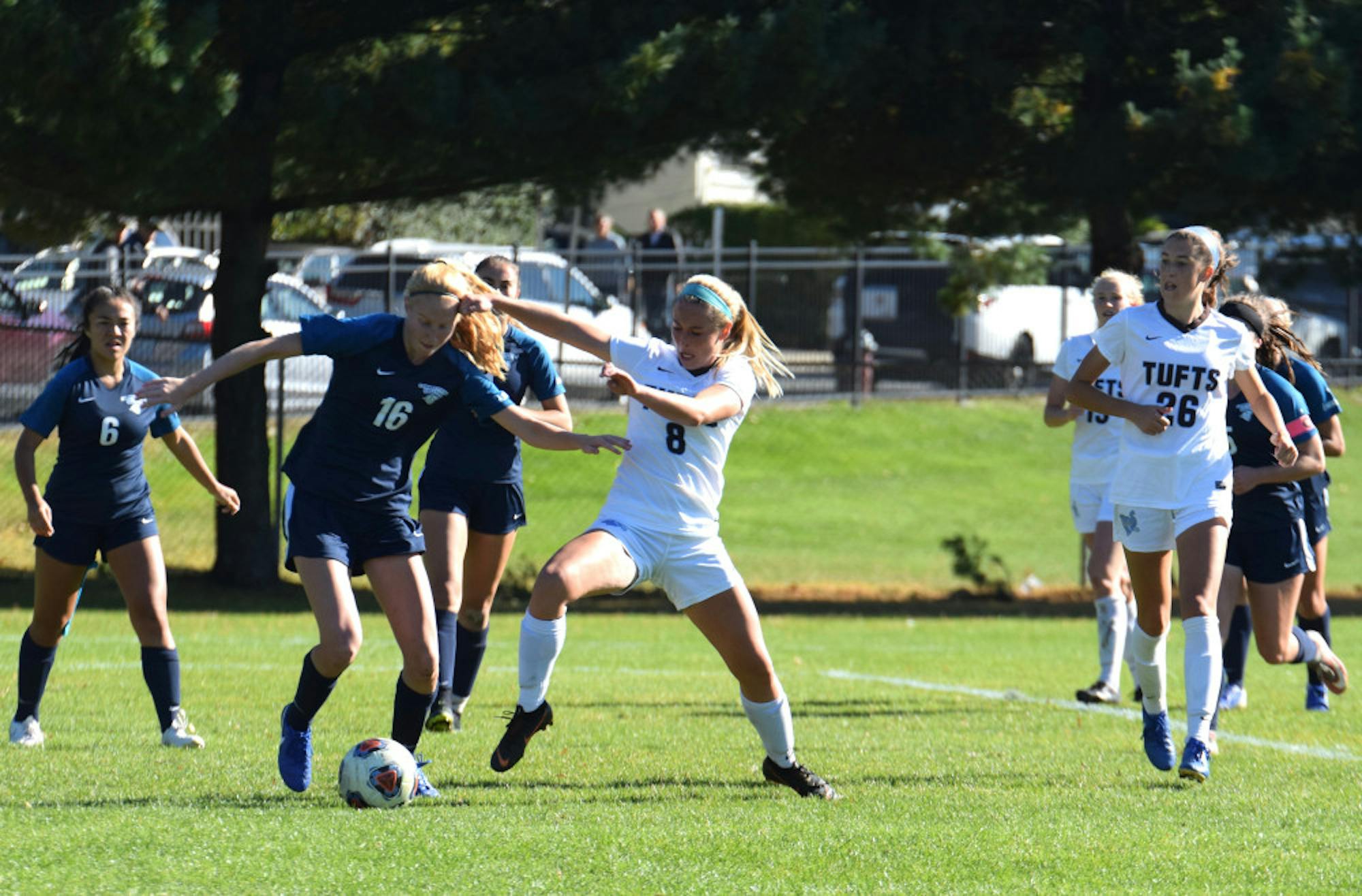As the incoming Class of 2025 is welcomed into the Jumbo family, senior student-athletes took a minute to reflect on their first years in Medford as well as their transition to Tufts both on and off the field. From the recruiting process and choosing Tufts to the countless hours in the weight room and competing for national championships, these student-athletes have been through it all and now offer valuable advice to student-athletes just beginning their journey in brown and blue.
Many students are first drawn to Tufts due to its close proximity to Boston as well as its being the largest school in the NESCAC. Additionally, student-athletes attribute their decision to the ability to get a liberal arts education while also playing at a competitive level.
“When I was in the area at one point I came and I walked around with Coach [Matt] Malone and just fell in love with the place," senior center and co-captain of the men's basketball team Max Oppenheim said. "I really liked how close we are to Boston, and you know the academic aspect of it all. I was really intrigued by the possibility of being able to pursue academic opportunities that I wanted while being able to be a competitive athlete at the same time.”
Student athletes also credit the people at Tufts, both on their teams as well as in the greater community, with helping them feel welcome on campus.
Hannah Isenhart, a senior midfielder on the women’s soccer team, reflected on her first-year experience.
“I really enjoyed playing a fall sport because I came in and already had such an amazing community," Isenhart said. "In terms of the season, personally, it went really well, and as a team it also went really well. It was the first time we made it to NCAA's in seven years so that was exciting, and we've gone back every year since and progressed further and further. But it just was so nice coming in and having a community right from the start.”
Isenhart noted that there are a few key differences between high school and collegiate athletics that stand out to her — both on and off the field or court. At the collegiate level, there is an emphasis on strength and conditioning for every team, something that is rarely part of a high school sports team's training.
“One of [the key differences] would be speed of play and strength," Isenhart said. "You come in and these girls you're playing against are bigger, stronger, faster. It's not too hard to get adjusted, but it took a quick instant to play faster and be more physical, especially the NESCAC is super physical. Going along with that, I had never lifted before and so that was an adjustment to add lift and strength into my training, but I'm very glad that that's something that we focus on as it is super beneficial.”
In addition to these differences and adjustments into their respective sports and teams, student-athletes also have to account for adjustments beyond athletics. Although many are used to the busyness that comes with playing sports in high school, being a student-athlete at the collegiate level requires first-years to take on more responsibility and quickly learn to manage their packed schedules. Luckily for student-athletes coming to Tufts, they have the advantage of having many upperclassmen on whom to lean for advice, guidance and help with this transition.
“Some of my best friends [my first year] were the seniors on our team. They couldn't have been better role models for us in terms of how to conduct yourself," Oppenheim said. "You come in as a [first-year] and you really have no clue what you're doing. As far as having somebody to base my behavior off of, they couldn't have been better.”
The seniors also provided valuable examples for what is expected in terms of competing on the field or court. Tufts prides itself in its highly competitive and successful athletics, and first-years are taught this from the moment they join a team.
“From a pure basketball point of view, [my first] season could not have been more disappointing, honestly," Oppenheim said. "We didn't make the tournament and for me, as a [first-year], I really didn't know what was going on. I just kind of took it for granted like, ‘Well, we'll be this good next year, it'll be fine.' But then you get in the locker room after the game, after the season has ended and has been this huge disappointment, and you see just the pure pain and disappointment on the faces of some of our seniors and it's like, ‘Oh wait, no, this is not supposed to happen; this opportunity doesn't come by every day.’ So, it was obviously disappointing, but I think it was a growing process for the younger kids to see how that all worked.”
Looking back on their college careers, student-athletes at Tufts take away many lessons and experiences.
“One thing that I'm super thankful for is learning how to work in a team and how the different pieces of individuals, like their strengths and weaknesses, come together to work towards this common goal of winning games, winning NESCAC, winning a national championship, whatever it might be," Isenhart said. "So, I think that really helped me grow, both personally and as a player. Just get as close as you can with your team and use the relationships you make on your team to help you for the rest of your college experience because it's a really unique position to have such a strong community. Being on a team has totally shaped how I am as an individual and moving forward, I look for environments that are team-based.”






